A simple unlicensed circuit like this is OK for experimenting in a small location, perhaps as far as a friend's house in the same neighborhood.
However, don't even try to scale this circuit to the power level you'd need for meaningful ham communication. Even the neighborhood-scale circuit is technically violating the law, but if you keep the power low and stay away from used frequencies, nobody will notice and therefore won't care. That is not true for a ham-level circuit.
If you want to do ham radio, get the right equipment and a license. Even with the right equipment and no license you'll get into trouble. You will have to regularly ID yourself. If you don't, that will be suspicious. If you do, you would have to use a fradulent callsign. Somebody is going to look up whatever callsign you use and when they find it not listed, you're in trouble.
In addition to all that, this circuit is inherently low power. This topology doesn't scale well to higher power levels. Making a RF power stage that produces significant power but is very pure (few unwanted harmonics), is not anywhere as easy as you seem to think it is.
As Barry said, most ham communication is not AM anyway. There is more single sideband, which is a lot trickier to design a circuit for.
